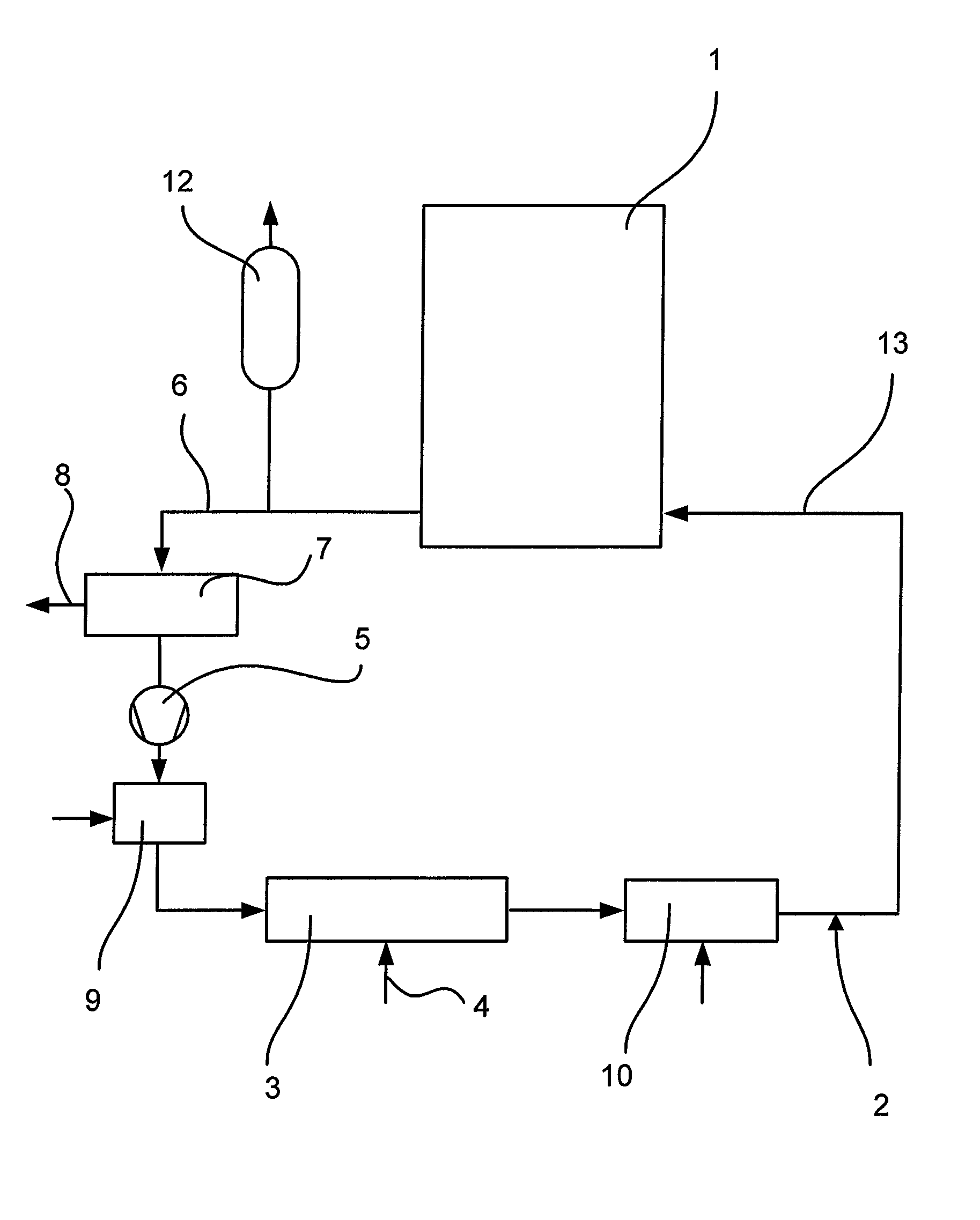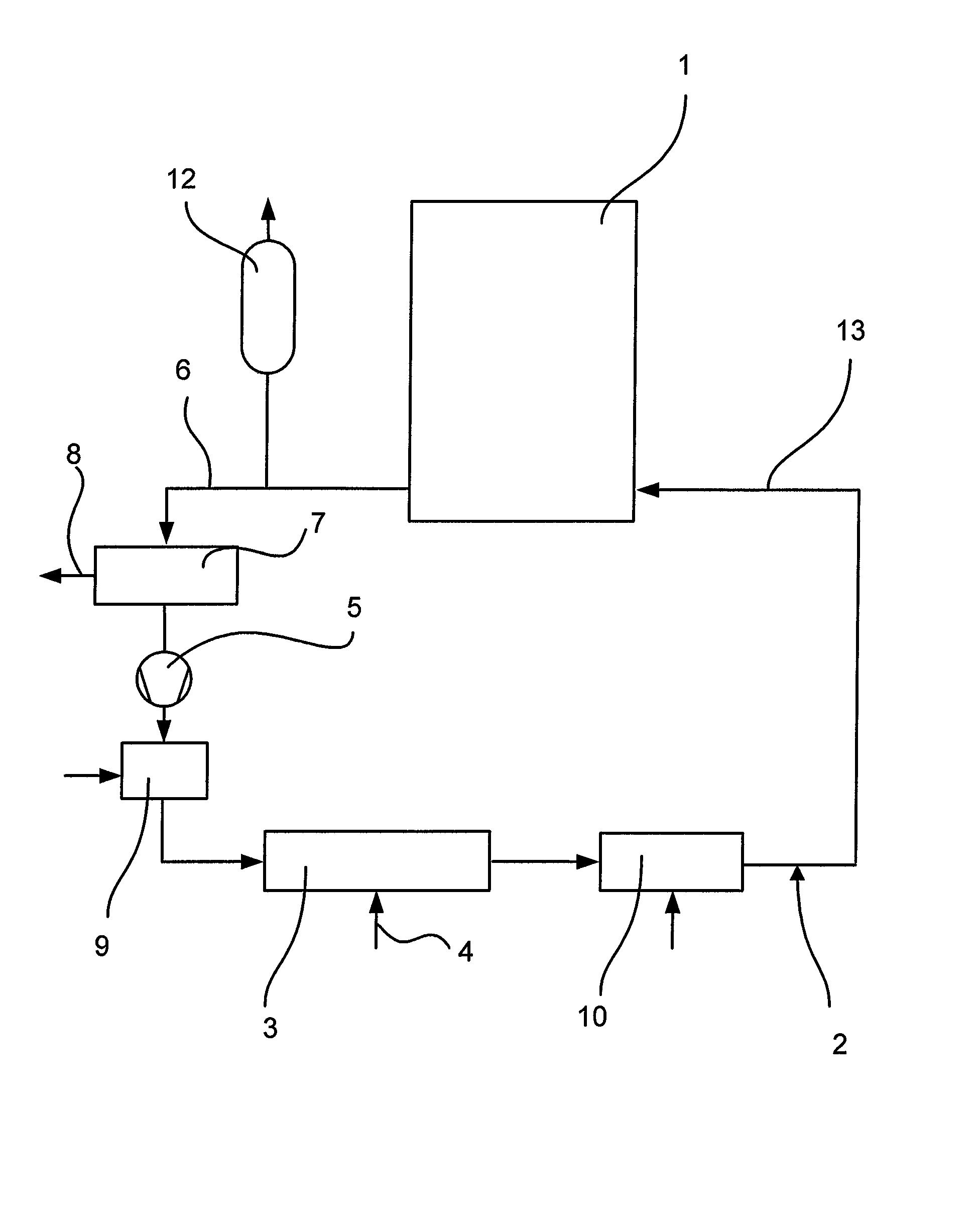Method for the Decontamination of an Oxide Layer-containing Surface of a Component or a System of a Nuclear Facility
- Summary
- Abstract
- Description
- Claims
- Application Information
AI Technical Summary
Benefits of technology
Problems solved by technology
Method used
Image
Examples
Embodiment Construction
[0021]Referring now to the drawing FIGURE in detail, a system 1 to be decontaminated may, for example, be the primary circuit of a pressurized water reactor. First, the primary circuit is emptied. In the case of the decontamination of a component, for example a primary system pipe, the same is placed in a container. Such a container would correspond to the system 1 in the flow diagram. A decontamination circuit 2 is connected to the system 1 or the container. This circuit is gastight. Before startup, the decontamination circuit 2 and the system are tested for leaks, for example by evacuation. As a next step, the entire plant, i.e. system 1 and decontamination circuit 2, is heated. For this purpose, a feed station 3 for hot air and / or hot steam is arranged in the decontamination circuit 2. Air and / or steam are fed in via a feed line 4. The decontamination circuit 2 is also provided with a pump 5 in order to fill the system 1 with the appropriate gaseous medium and circulate the same,...
PUM
| Property | Measurement | Unit |
|---|---|---|
| Temperature | aaaaa | aaaaa |
| Temperature | aaaaa | aaaaa |
| Temperature | aaaaa | aaaaa |
Abstract
Description
Claims
Application Information
 Login to View More
Login to View More - R&D
- Intellectual Property
- Life Sciences
- Materials
- Tech Scout
- Unparalleled Data Quality
- Higher Quality Content
- 60% Fewer Hallucinations
Browse by: Latest US Patents, China's latest patents, Technical Efficacy Thesaurus, Application Domain, Technology Topic, Popular Technical Reports.
© 2025 PatSnap. All rights reserved.Legal|Privacy policy|Modern Slavery Act Transparency Statement|Sitemap|About US| Contact US: help@patsnap.com


